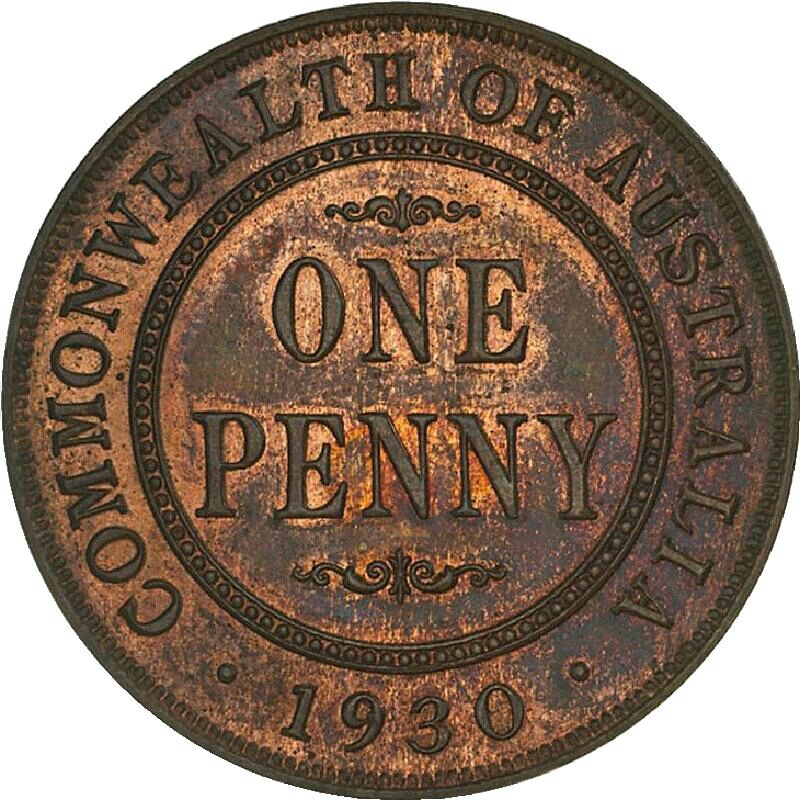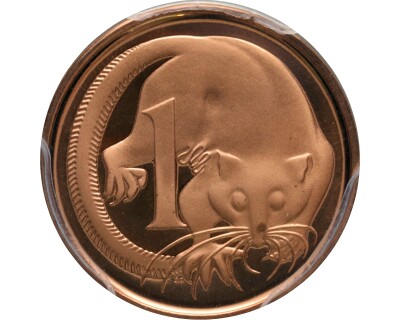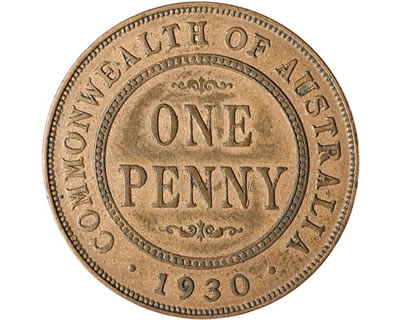Collecting Old Australian Coins
Penny
Similar to the half penny series, the penny was struck from 1911 to 1964 in all years except 1937 and 1954. Most dates are available for a few dollars except 1925, 1930 and 1946. The 1930 is the key date and one of the most valuable copper coins in the world starting at about $15,000 for a problem-free example. The 1925 and 1946 fetch about $100 and $60 in problem-free circulated states respectively.
In mint state however most early dates start from around $100 with later dates becoming available for less. Collectors trying to obtain the 1914, 1915, 1918-I, 1920 plain, 1925, and 1931 should expect to pay at least $1000 and likely much more for the 1920 plain and 1925 in particular. The 1930 is not known to exist in mint state though a proof example exists on the open market if you have $2 million to spare.


The mint marks used for the pennies are similar to the half pennies except that in 1940 and 1941 the Perth mint used a dot between the designer's initials K.G. (for Kruger Gray) to indicate coins struck there though in 1941 they also used the dot after the Y. In 1919 and 1920 dots above and below the scrolls on the reverse indicated various dies parings though the mints of manufacture for these are not confirmed.
Although no circulation issues were produced in 1937, pattern strikes were produced that year though the design was not adopted for circulation until 1938.









